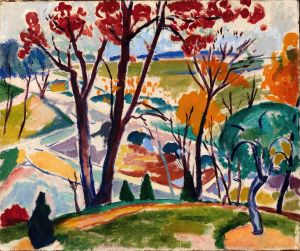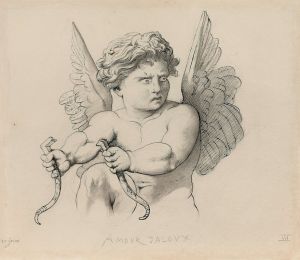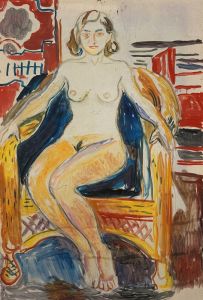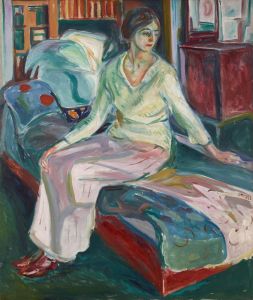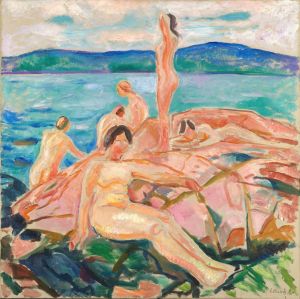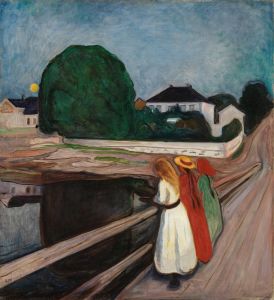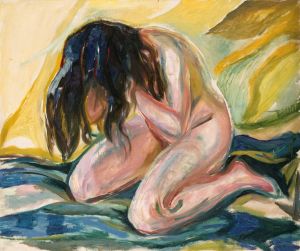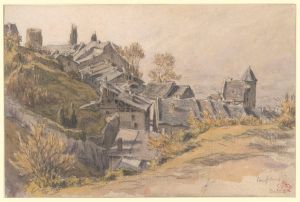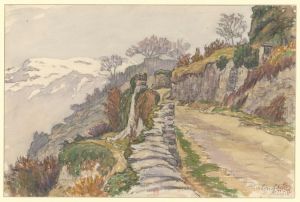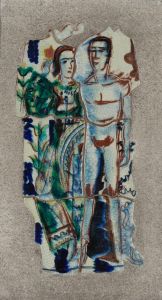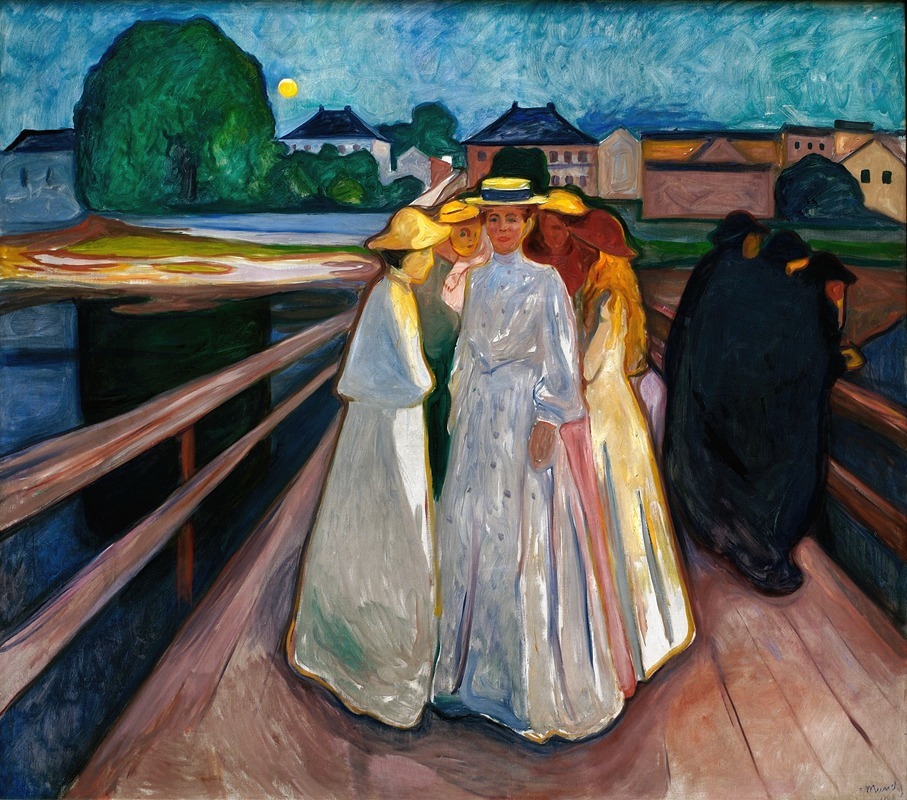
On the Bridge
A hand-painted replica of Edvard Munch’s masterpiece On the Bridge, meticulously crafted by professional artists to capture the true essence of the original. Each piece is created with museum-quality canvas and rare mineral pigments, carefully painted by experienced artists with delicate brushstrokes and rich, layered colors to perfectly recreate the texture of the original artwork. Unlike machine-printed reproductions, this hand-painted version brings the painting to life, infused with the artist’s emotions and skill in every stroke. Whether for personal collection or home decoration, it instantly elevates the artistic atmosphere of any space.
Edvard Munch's painting "On the Bridge" is a notable work by the renowned Norwegian artist, who is best known for his iconic piece "The Scream." Munch, a pivotal figure in the Symbolist and Expressionist movements, often explored themes of existential anxiety, love, and death in his work. "On the Bridge," created in 1903, is a compelling example of Munch's exploration of human emotion and psychological depth.
The painting depicts a group of figures standing on a bridge, set against a backdrop of swirling, vibrant colors. Munch's use of color and form in this piece is characteristic of his style, where he often employed bold, expressive brushstrokes and a vivid palette to convey mood and emotion. The figures on the bridge are rendered in a somewhat abstract manner, with elongated forms and indistinct features, which is typical of Munch's approach to capturing the essence of human experience rather than focusing on realistic representation.
"On the Bridge" is part of a series of works by Munch that feature bridges as a central motif. Bridges in Munch's art often symbolize transition and connection, reflecting the psychological and emotional states of his subjects. In this painting, the bridge may represent a passage or a threshold, suggesting themes of change or the crossing from one state of being to another. The figures on the bridge appear isolated and introspective, which aligns with Munch's frequent exploration of loneliness and alienation.
The setting of the painting, with its dynamic and almost turbulent background, enhances the emotional intensity of the scene. Munch's landscapes often mirror the inner turmoil of his figures, and in "On the Bridge," the swirling sky and water contribute to a sense of unease and tension. This interplay between the figures and their environment is a hallmark of Munch's work, where the external world reflects the internal psychological landscape.
Munch's art was deeply influenced by his own life experiences, including personal tragedies and his struggle with mental health. These elements are often reflected in his work, imbuing it with a sense of authenticity and emotional depth. "On the Bridge" can be seen as an extension of Munch's ongoing exploration of the human condition, capturing the complexities of emotion and the often fraught nature of human relationships.
The painting is housed in the Munch Museum in Oslo, Norway, which holds a significant collection of Munch's works. The museum is dedicated to preserving and promoting the legacy of Edvard Munch, providing insight into his artistic journey and the impact of his work on modern art.
In summary, "On the Bridge" exemplifies Edvard Munch's ability to convey profound emotional and psychological themes through his distinctive style. The painting's use of color, form, and symbolism reflects Munch's deep engagement with the human psyche, making it a significant piece within his oeuvre and a testament to his enduring influence on the art world.





